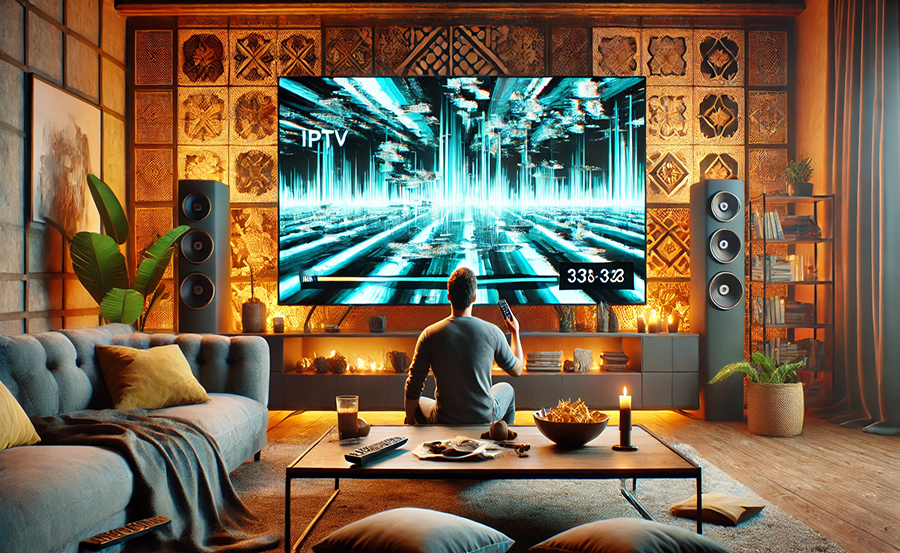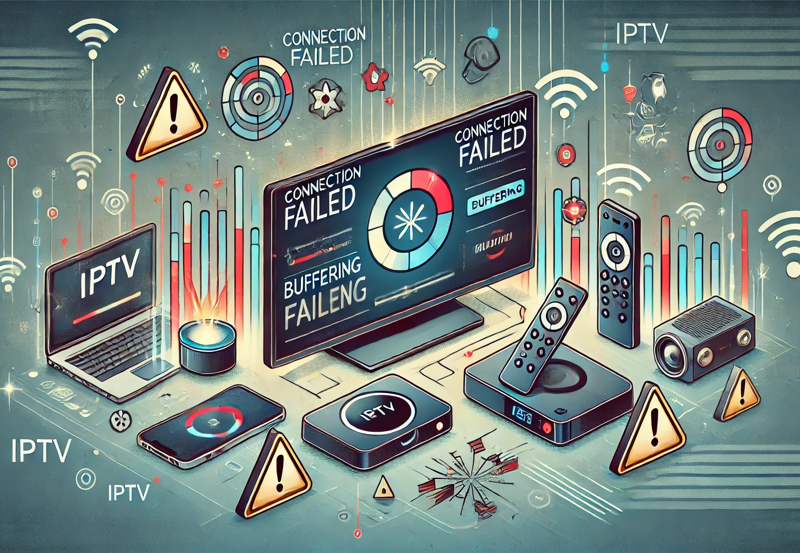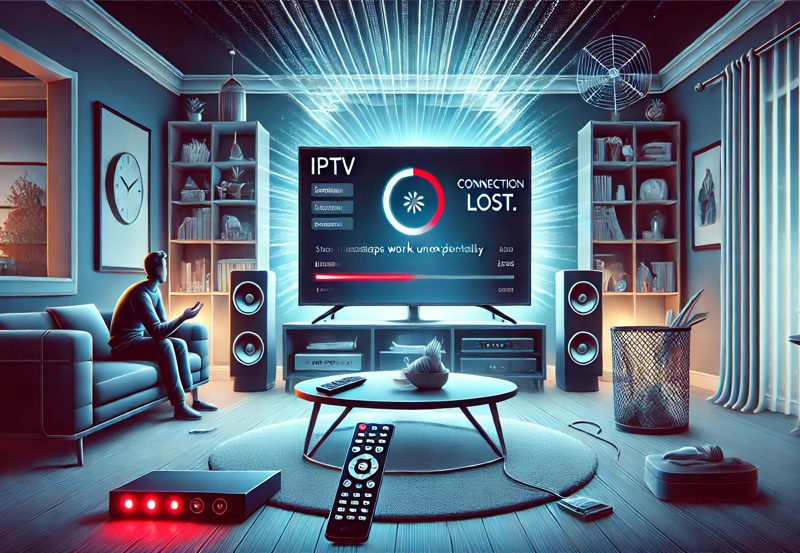Whether you’re a streaming aficionado or just someone who enjoys a good Saturday night film binge, encountering IPTV pixelation and lag is frustrating. Addressing these issues isn’t just about comfort—it’s about optimizing your options to achieve streaming excellence. So, how can you ensure your IPTV gives the best performance on your Firestick or any other device? Let’s explore some practical, easy-to-implement strategies.
Understanding IPTV and Its Challenges
Before diving into solutions, it’s important to understand what IPTV is and why pixelation and lag might occur. IPTV, or Internet Protocol Television, represents a significant shift from traditional broadcasting. It streams video content over internet protocols, providing users flexibility in content consumption. However, this convenience often tangles with issues like lag and pixelation due to varying internet speeds and quality.
The Basics of IPTV Technology
IPTV delivers television content through packets over an IP-based network instead of typical satellite systems. This method allows interactive features such as pausing and rewinding.
Smart Choice:
Stream your favorite shows, sports, and movies with Calma Hub, your go-to IPTV provider for uninterrupted viewing.
- Leveraging IP networks for streaming provides the benefit of on-demand content.
- The downside can be susceptibility to network fluctuations causing interruptions.
Common Causes of IPTV Pixelation
Pixelation often results from unstable internet connections or bandwidth limitations. When video packets are delayed or dropped, the quality diminishes, generating a pixelated view.
- Network congestion is a common culprit.
- Old or defective streaming devices may contribute as well.
Effective Solutions to Counter IPTV Issues
Tackling pixelation and lag requires a multi-pronged approach. Here, we break down effective solutions to enhance your experience and maximize your streaming delight.
Optimize Your Internet Connection
Stable and fast internet is the cornerstone of seamless IPTV service for Firestick users. Ensuring this could dramatically reduce lag and pixelation issues.
Upgrade Your Internet Plan
If pixilation persists, consider examining your current internet plan. Greater bandwidth can handle higher data flows, equating to smoother streams.
- Contact your ISP to explore feasible upgrade options.
- Deploy a fiber optic connection if available for consistent speeds.
Enhance Your Wi-Fi Signal
Adjust the placement of your router to minimize interference. Physical barriers like walls can degrade Wi-Fi signals, leading to IPTV disruptions. Ensure your router is centrally located and free from obstacles.
Device Maintenance and Upkeep
Your streaming device’s health directly affects IPTV performance. Maintaining your Firestick or smart TV can prevent many common problems.
Software Updates
Regular updates are essential. They not only fix bugs but also enhance performance, ensuring your device is running optimally.
Clear Cache and Unused Apps
Devices accumulate unnecessary data over time. Periodic clearing of app cache and removal of unused applications can improve device functionality.
Exploring IPTV Subscription Plans
Choosing the right IPTV subscription plans can be pivotal. The wrong plan might limit streaming quality, while the right one can elevate it. Review options thoroughly to align with your viewing preferences and internet speed.
Assess Your Content Needs
Identify must-have channels and content. Avoid paying for unnecessary extras. This economical approach ensures optimal use of your resources.
Trial Different Packages
Many services offer trial packages. Use these to test performance and content accessibility before committing.
Adjust Settings for Better Performance
Fiddling with settings might seem daunting, but it can work wonders. From adjusting resolution to setting bandwidth limits, these tweaks can enhance streaming fluidity.
Modify Video Quality
While everyone loves 4K, if you’re facing lag issues, dialing back to 1080p or even 720p can enhance speed without significantly affecting picture quality.
Maximize Your Streaming Delight with Advanced Techniques
For those who stream passionately, exploring advanced strategies could unlock an even more immersive experience.
Implement a Wired Connection
Connecting devices through Ethernet cables can provide steadier connections compared to wireless setups, reducing the chance of lag.
Advantages of Wired Connections
The stability and speed in wired connections are unmatched. If possible, convert to Ethernet for a reliable streaming session.
Using VPN for IPTV
A reliable VPN can not only secure your data but also improve streaming efficiency by avoiding throttling.
Selecting the Right VPN
Choosing a high-speed VPN renowned for streaming can ensure peak performance.
Additional Tips for Preventing IPTV Issues
Rather than reacting to problems, instill practices that proactively prevent IPTV disruptions. This not only saves time but provides a stress-free viewing experience.
Regular System Reboots
A periodic restart of your router and device can clear out glitches that may degrade performance. This simple act can make a notable difference.
Monitor Your Network Usage
Keep track of what’s consuming bandwidth. Reducing simultaneous heavy downloads while streaming can elevate IPTV quality.
- Review bandwidth consumption periodically.
- Utilize applications that provide analytic data for network use.
Conclusion That Isn’t a Conclusion
Unlocking the full potential of your IPTV services involves a combination of understanding and acting. From subscription plans to internet optimizations, each aspect plays a role in delivering a seamless viewing experience. Don’t let technical obstacles derail your entertainment—implement these solutions and rediscover the joy of uninterrupted streaming.
FAQs about IPTV Pixelation and Lagging

Why is IPTV more prone to lagging compared to traditional TV?
IPTV relies on the internet rather than satellite signals to deliver content. Network fluctuations, such as bandwidth and congestion, impact performance and can cause lag.
Can streaming platforms affect IPTV performance?
Yes, using multiple streaming platforms simultaneously can consume more bandwidth, potentially affecting IPTV quality.
Should I always opt for the highest resolution available?
While high resolutions offer better clarity, they also demand more bandwidth. Select a resolution compatible with your network’s capabilities.
What IPTV service for Firestick is most resilient to lag?
Choosing a well-rated service optimized for Firestick can enhance the experience. Look for reviews highlighting consistent performance regardless of network conditions.
ProgTV for Beginners: Understanding Program Guide Features





